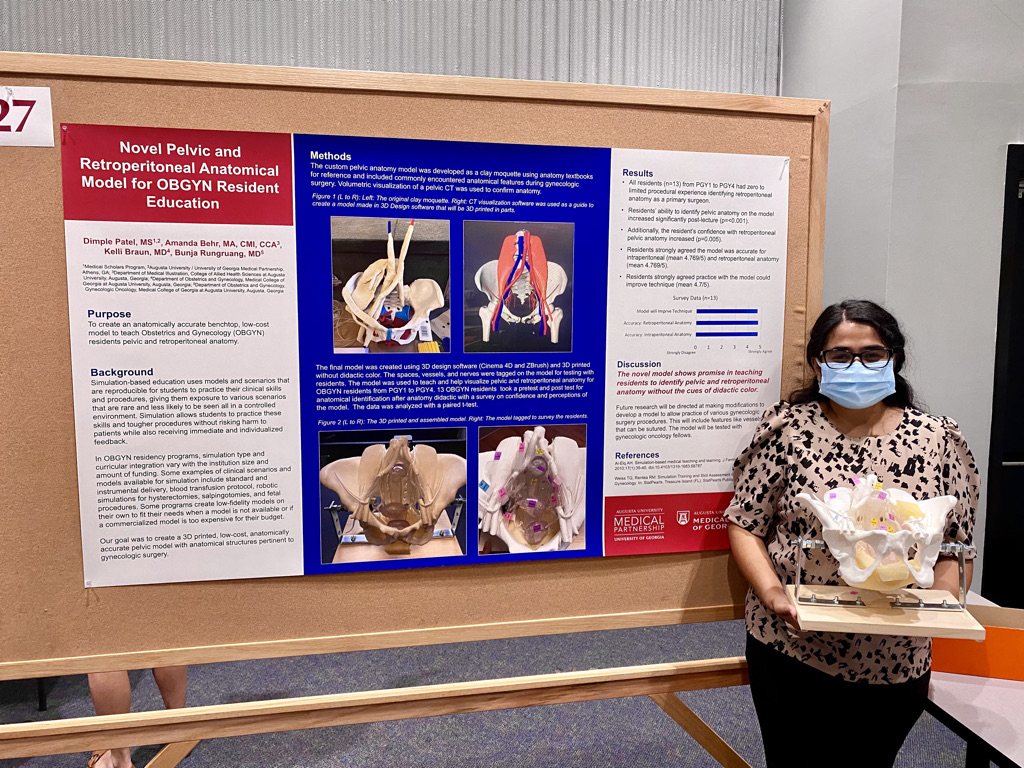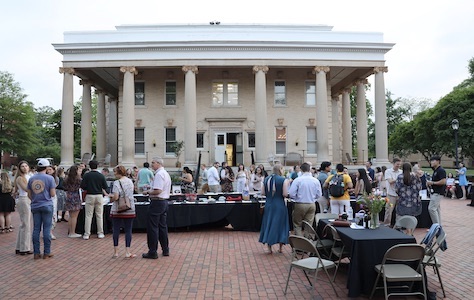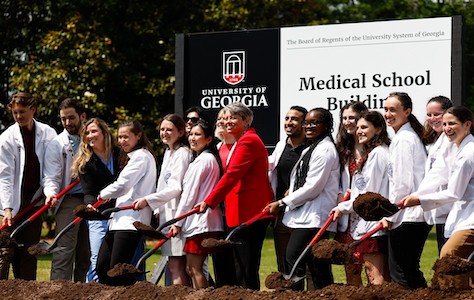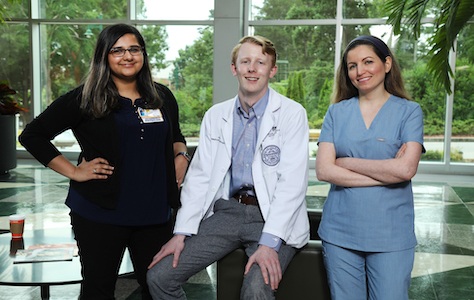-What question were you seeking to answer?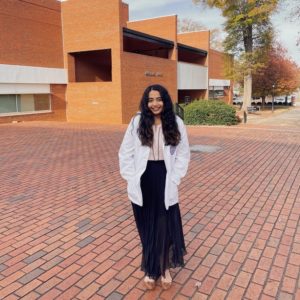
The main goal of our project was to develop a low-cost, anatomically accurate benchtop model to teach Obstetrics and Gynecology residents pelvic and retroperitoneal anatomy.
-Why did you choose this topic?
This project was of particular interest because I am very interested in Obstetrics and Gynecology as a specialty and found a new interest in medical education. I also did not know much about medical illustration and medical sculpture and thought it would be an incredible hands-on learning opportunity. I also had the opportunity to attend a weekly medical sculpture class where I was able to help prepare the materials and learn about the different techniques. Also, I would like to thank Megan Chesne, M3, for introducing me to this fantastic team and opportunity!
-How did you study this question?
I sculpted the anatomy out of clay to help me visualize the placement and tracks of the vessels. Then, I went through CT data and selected each piece of anatomy that needed to be included in the model, such as the psoas muscle, inferior vena cava, and common iliac arteries. That information was compiled by my wonderful PI, Amanda Behr, who is a medical illustrator. She used 3D design and medical illustration software like ZBrush and Cinema. The final model was 3D printed in pieces without didactic color and assembled. The model was tested with 13 OB/GYN residents from PGY-1 thru PGY-4 with little to no experience identifying retroperitoneal anatomy as a primary surgeon. During their Friday didactic lecture, they were given a pre-test survey which they took using the model. This was followed by a didactic lecture and a post-test survey they took using the model.
-What did you learn through your research?
I started by learning the materials used in the medical sculpture lab, including silicone, a seaweed-based material called alginate, wax, and clay. I learned how to prepare the materials, measure them, or model them to get the structures I wanted. Once the model was created, it would be cast, and a mold would be made from that structure. There is a lot of trial and error in medical sculpture. It is crucial to figure out where the trial went wrong and what went wrong: was the color was off, the mold was made incorrectly, or something cracked during setting. I also learned that there are many different avenues to engage in the specialty through furthering resident education and bolstering learning resources of the field. Ultimately, this project had an enormous learning curve and put me outside of my comfort zone while forcing me to think creatively and critically.
-Who stands to benefit from this research?
We hope with the development of this new model, that residents and fellows will gain the most benefit. The goal is to improve clinical skills in a controlled and safe manner, ultimately increasing confidence in practice and improving patient outcomes. The model was found to aid residents in learning pelvic and retroperitoneal anatomy. They also found that having the model a neutral color challenged them in identifying the vessels and required them to trace back the origin of these structures. This is useful because there are no didactic colors during surgery, and they would be required to identify the anatomy similarly.
-What are/what would be the next steps in your research?
This model is still in development. This initial prototype was validated for anatomical accuracy through our current research project. However, we are modifying it so that residents and gynecologic oncology fellows can practice various surgical procedures such as lymph node dissection, creating spaces in the pelvis, and vascular injury repair. The bowl of the pelvis will be made wider. I am working on creating a silicon fat pad that can be used to dissect out lymph nodes. The coolest modification we will be working on is creating vessels that can be cut and sutured. All in all, I am very excited to continue working on this project and create something that can be used as a learning tool for all stages of graduate medical education in OB/GYN and hopefully my future career.
